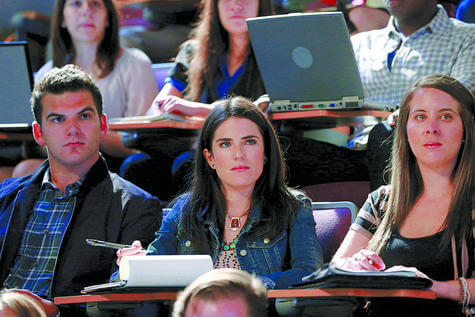In May 2015, the first graduates of Berklee College of Music’s online bachelor degree program walked across a (real, not virtual) stage at a commencement ceremony in Boston. At the time, the program was one of the first arts education degrees that could be earned entirely online, making music education— considered an unnecessary luxury for many— accessible to a wider audience. But what about other types of arts education? RELATED:The new rules of leadership
Enter Kadenze (pronounced “kah-den-zay”), a for-profit online portal that brings together the best arts education classes, resources and professors into one website. Pulling from universities around the globe, Kadenze offers MOOCs (Massive Open Online Courses) in coding, visual art, music and art history. These courses may be used by students as credits towards a college degree, or simply as resume-builders. The website partners with 26 schools including Princeton University, the School of the Art Institute of Chicago, Goldsmiths University of London and the Pratt Institute. RELATED: Are micro-credentials the future of education? Columbia University and Berklee are the latest schools to team up with Kadenze. Co-founder of Kadenze Ajay Kapur notes the important part these two schools have played in the recent growth of online classes, particularly Columbia’s research into online education. In a 2013 study, the Teacher’s College at Columbia found that roughly one-third of all college students were enrolled in online courses, a sizeable increase from 2010 and a number that will continue to grow thanks to websites like Kadenze. “Having Columbia on board is such an honor because they have really led the way on research behind online education,” Kapur said. “And then Berklee College of Music is just such an honor because, in my mind, they have proven that every university needs to have an online program for the future and have shown what a successful program looks like. The partnership is going to be such a sharing of knowledge between both parties… we’re really excited to grow with both of these new partners.” The high cost of a creative education “Higher education is becoming very, very expensive…maybe we can justify some of these prices that we’re seeing, but definitely in the arts, music and creative fields, it’s just getting a little bit insane,” Kapur said. Kadenze users include high school and college students looking to pick up an extra college credit, but the majority of Kadenze’s students are adults who have already graduated from college and want to learn more about a useful skill or technique that could help them improve in their career field or look good on a resume. “We are seeing a lot of users who already have a college degree, and we’re entering this age where people just really want to continue learning— some of our most popular courses are in the areas of design and creative coding…it helps them push people to where they want to get to in the next phase of their career,” Kapur said. A hands-on arts education— online? “I think the thing that’s very special about Kadenze is that it’s not only the teacher that you learn from; you end up learning from the global community who are submitting assignments and are really part of the discussion, and that’s what makes it so fun,” Kapur said. Premium membership to Kadenze is $10 per month and allows students to post their work on collaborative discussion boards, receive grades and college credits and build an online portfolio, while free membership allows students to take classes in a more passive manner, mostly learning and observing rather than participating. All of the courses Kadenze offers focus on harnessing individual creativity and proving that creativity is useful within any career field, not just the arts.
Said Kapur, “Being creative, being a designer, being a creative thinker— these are all things that are necessary for innovation and leadership in the world.”
Kapur says the idea for Kadenze stemmed from two problems in arts education: the growing cost of higher education and, secondly, that the influx in research about online education had been mostly geared towards online classes for math and science students, not arts students. That college education is increasingly expensive isn’t news to most people, but Kapur especially noticed the detrimental effect of rising costs within the arts fields.
Classes on Kadenze are conducted through video-based lectures and collaboration on group discussion boards. As technologies advance and music and art are increasingly digitized, these discussion boards provide a place for students to share their creative digital work that thrives better online than in a traditional classroom setting. The students are able to interact with each other on the discussion boards, bringing people from all over the world together to discuss art.
























